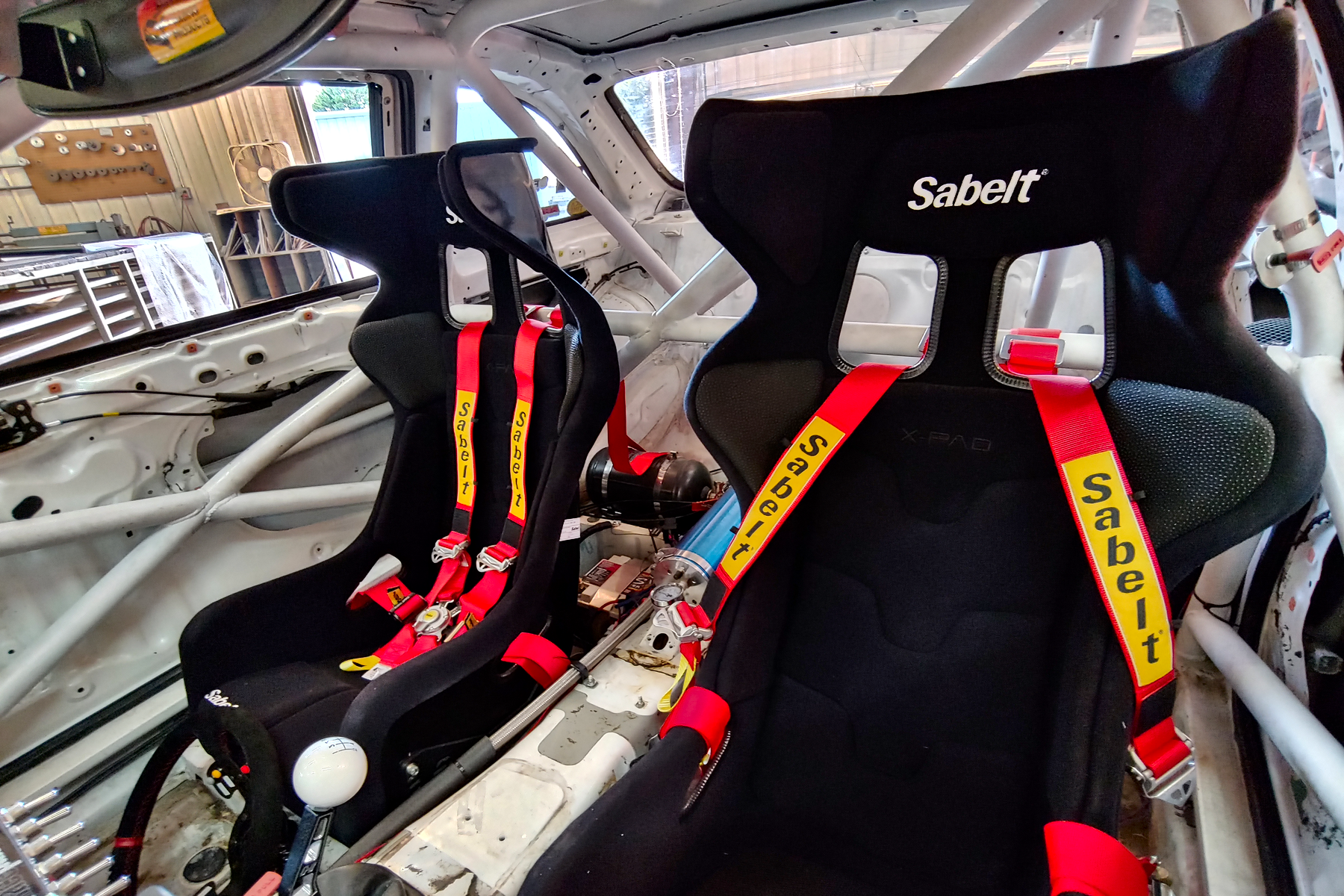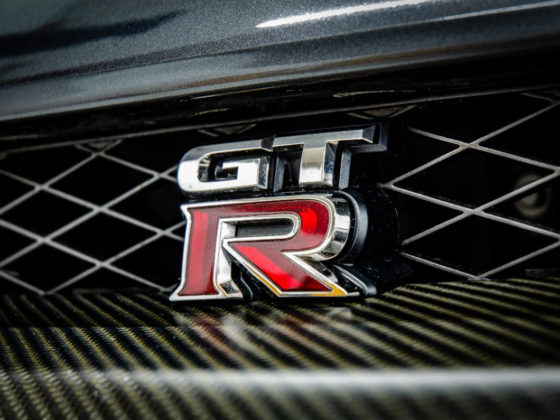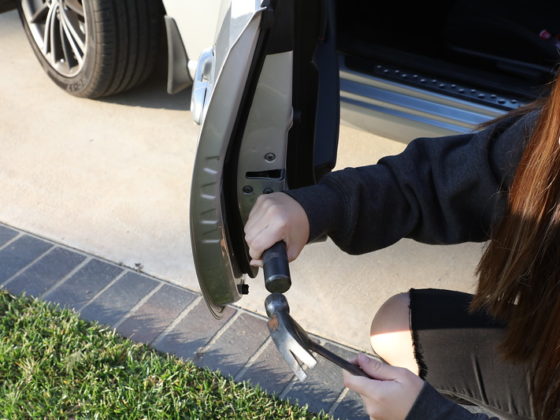
It’s a little mangled, and a little ugly, but it’s still damned strong and an excellent place to attach a tow strap. However, some fabrication is required. You can’t just bolt the tow strap to one of these holes. Firstly, a single hole’s bolt diameter isn’t really optimal for the shock load that will be placed into it when the tow truck starts pulling away from you, and there’s a minimal risk of shearing the bolt off.
Secondly, the tow strap should be pulled in such a way that the strap is parallel to the bracket. The bracket of the strap should NOT be mounted at a 90-degree angle to the strap. Since this is a flat surface, we can’t just bolt the strap here. We need a mounting surface that will enable the strap to be correctly oriented.

My rear transport hooks are long gone, and the aftermarket bumper makes them unreachable anyway. So a new bracket will be fabricated to go here for the tow strap.


The edges will be rounded off so that it looks nice, and then a tab will be welded on to orient the strap in the correct… orientation.

Again, a nice shape is outlined since these parts will be hidden out of sight. Because every part should be beautiful, even if it’s not visible.




3 comments
As usual, a very well written article. Thanks, Erik! There is a lot of good information here and I hope that your next update IS about that well-deserved track time. I do have a question, though. At the bottom of page 2, you mention that “The factory seat brackets had been cut and channeled to accommodate flat bar which then had threaded holes installed onto which the seat mount was attached.” So, was the newly installed seat and bracket attached to the old flat bar setup? If so, why didn’t you have Robinson remove the flat bar and do a full install by not using any previously fabricated components? Not to detract from the work done (which is awesome), just a curiosity. Thanks.
@BANSFTC
Yes, if you look at the last picture on page 2, those are the “original” mounts that were fabricated by the cage builder (different shop). It’s basically flat bar fabbed into the OEM seat mounts. On the middle of page 6 you can see that Barry ground the paint away to expose bare metal, and then welded his new square frame directly to the flat bar that was already there. So, the OEM seat mounts have flat bar welded to them, and then a square frame welded to that.
Barry felt that the existing flat pieces were welded well enough into the chassis that they would be a suitable mounting point for the new frame. It would’ve been extra hours to chop all that stuff out.
The other thing is that the OEM mounts are usually (!) safe enough for rollover and serious crashes in terms of being welded into the car. So, using them as a starting point can sometimes be easier because they are often flat in relation to a floor that is far from flat.
If I was starting over from a bare tub today, Barry probably would’ve opted to make two bars going from the side rail to the tunnel all nice and welded in and then build the seat frame on top of that, but that’s quite a bit of extra work. You can see from the picture on the middle of page 6 that the floor of the driver side is not flat. So to make it work you end up having to start cutting things out of the floor pan and that gets ugly quick.
I hope that clears it up!
Fat-fingered my own name. I miss the previous motoiq.com format where we would log in.
Yes, your reply does clear it up. I was thinking about the cross bars that you mentioned (side rail to tunnel), but your explanation makes it clear why it was done with the existing flat stock. Thanks for clarifying. Keep these articles coming! They’re great.